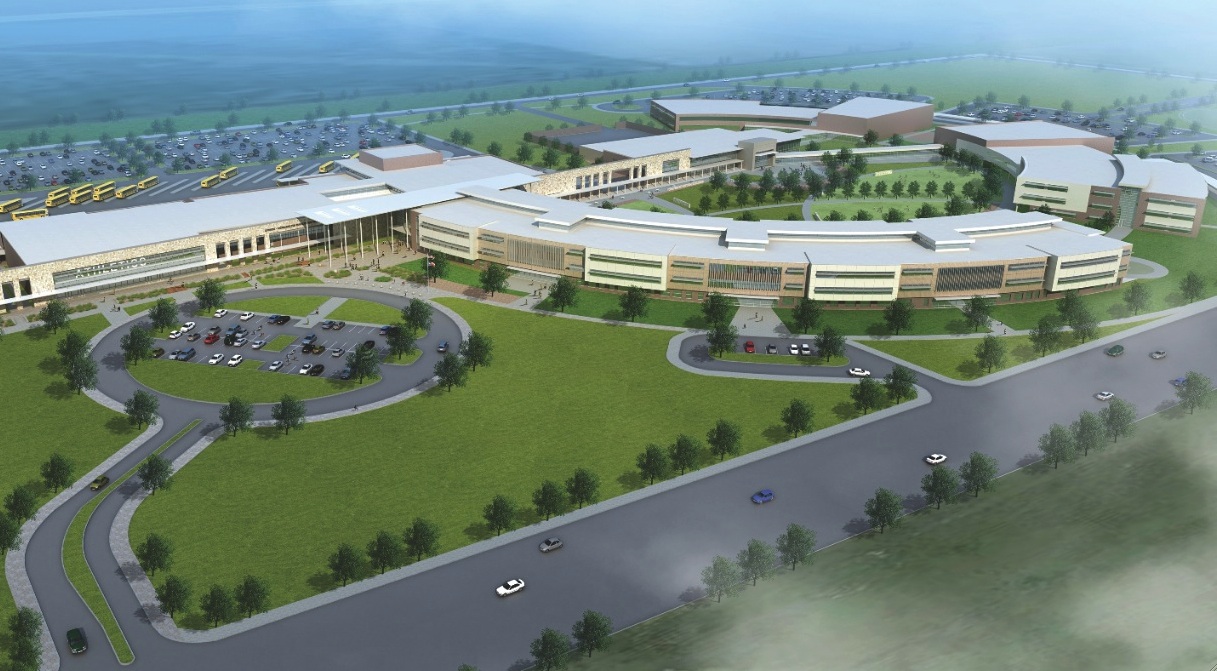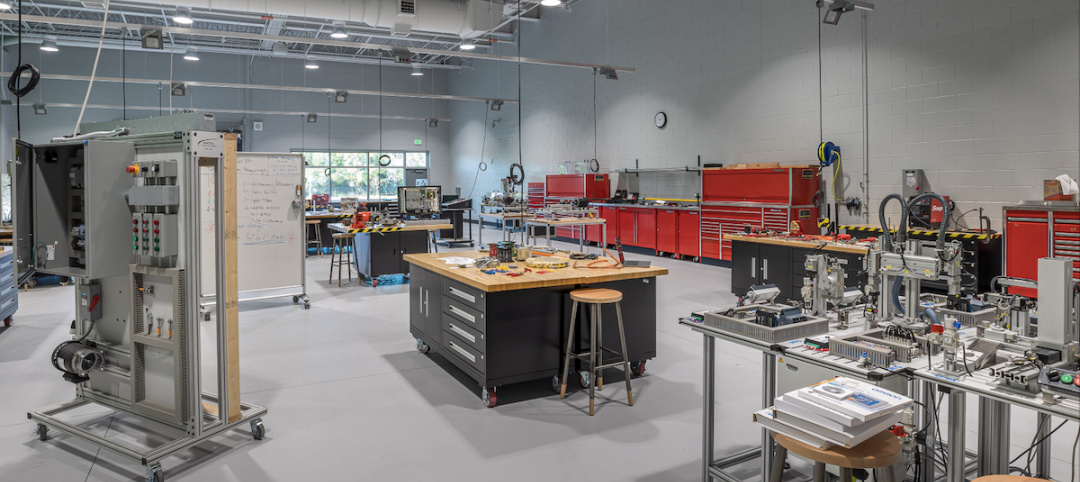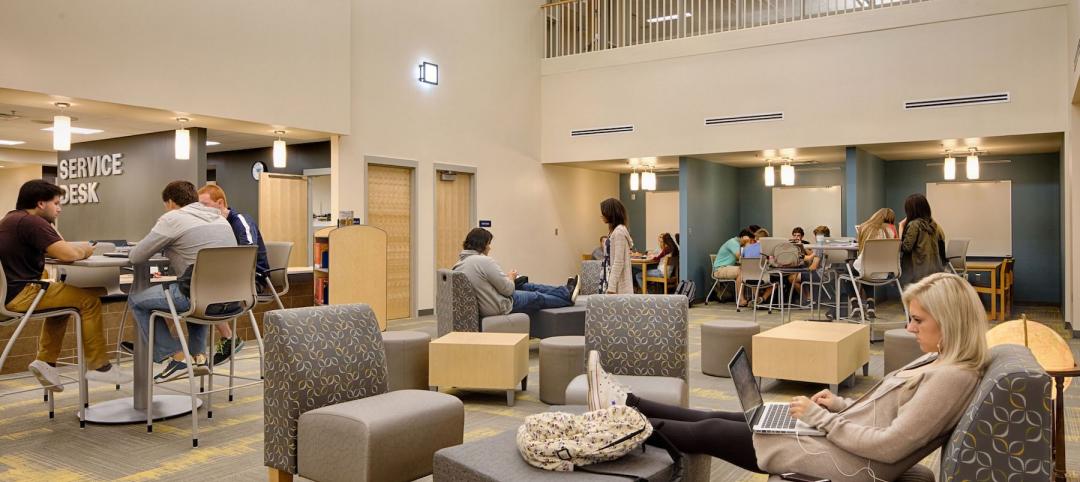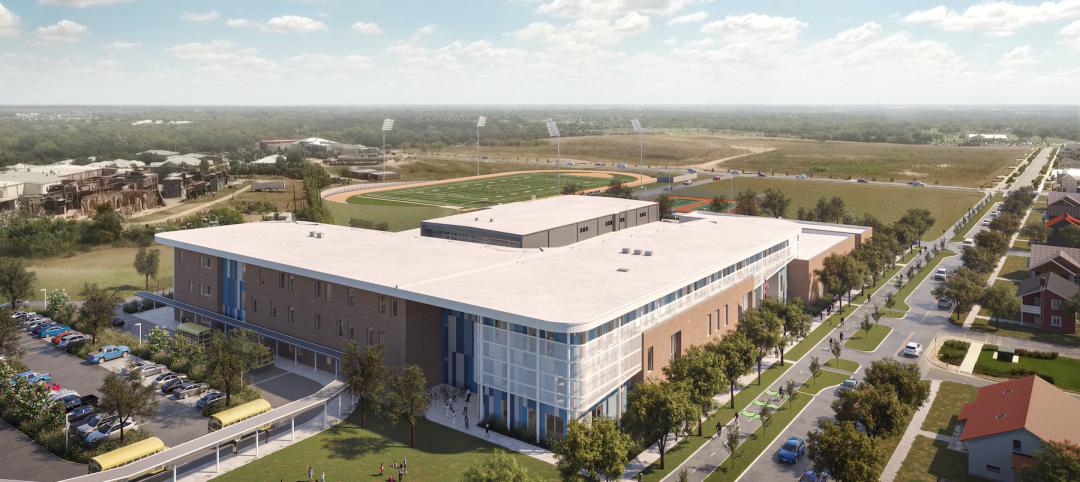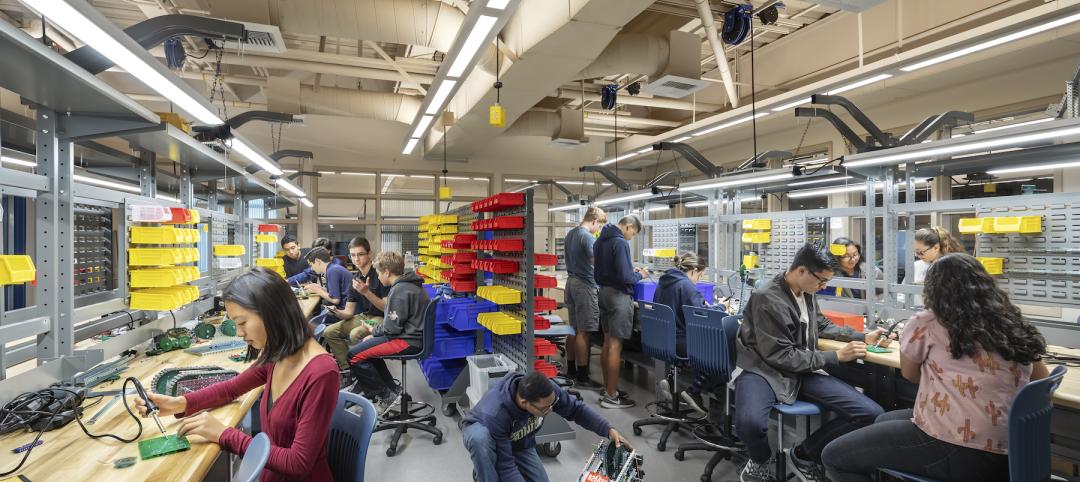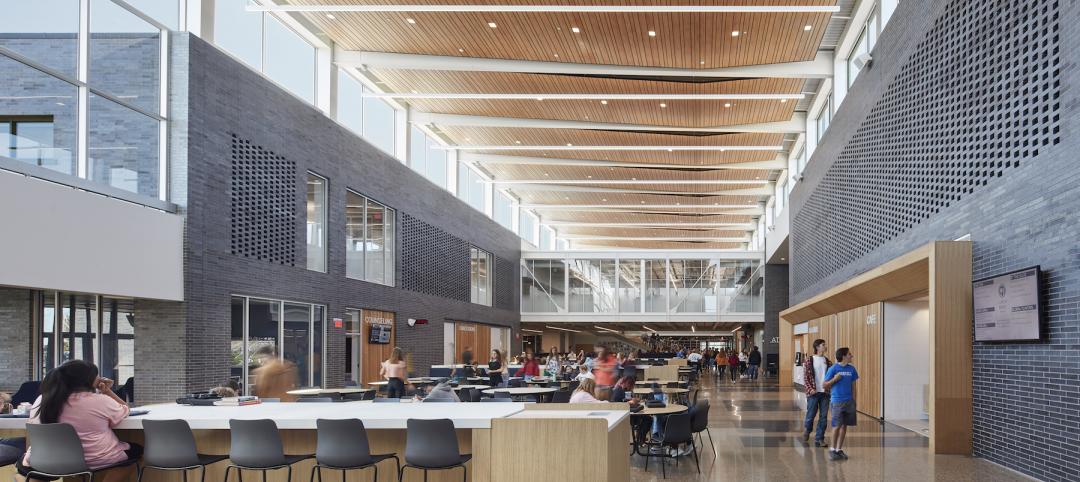Financing for school construction depends primarily on local bond referenda, so it’s difficult to make a blanket statement about national trends. However, Paul Abramson, Education Market Analyst for the School Planning & Management magazine, has estimated that school spending for project completions of construction, additions, and renovations hit $14.1 billion in 2014, or 5.4% more than the previous year.
AEC professionals say that, on a case-by-case basis, individual projects are being adequately financed. But many districts are struggling to have new construction and renovation keep pace with student population growth.
Montgomery County, Md., has seen its student count increase by nearly 12%, to 154,230, since 2007. More than 9,000 students are being taught in portable classrooms. The district expects its student count to reach 165,358 by 2020, according to the Washington Post. District Superintendent Joshua Starr has asked for $221 million to be added to the district’s six-year capital improvement budget, which would bring it to $1.75 billion.
“There are five million PK-12 students in Texas, and we’re gaining 100,000 students per year, which translates into a need for 100 campuses.” — Dan Boggio, President/CEO, PBK
In California, there’s a $2 billion backlog in applications for school-construction assistance from districts around the state, according to the Sacramento Bee. In January, construction and home-building groups launched a campaign to get a $9 billion school bond on California’s November 2016 ballot.
In other parts of the country, communities are backing school financing programs to modernize older buildings and keep up with student growth. “There are five million PK-12 students in Texas, and we’re gaining 100,000 students per year, which translates into a need for 100 campuses,” says Dan Boggio, President/CEO of architectural firm PBK. “School districts are very aware of this, and bond referendums [in Texas] have been passing by wide margins.”
For the past 15 years, bond financing has been steady in Wichita, Kan., where “we’ve done a lot of construction,” says Julie Hedrick, Facilities Division Director for Wichita Public Schools. This district is at the tail end of a $370 million bond passed in 2008, and currently is building a $60 million high school—its largest to date—and adding an auditorium and classrooms to two middle schools.
By a vote of three to one, voters in Shoreham, N.Y, recently approved the Shoreham-Wading River Central School District’s $33.5 million construction bond issue for a $48.5 million infrastructure and renovations program dubbed “The Renewal Project,” which will encompass all four schools operated by the district.
Orange County, Fla., last summer approved a half-cent sales tax extension that will help fund school construction program through the next decade. The county has about $300 million in school projects already in the works.
Under its latest school construction bond, valued at $748 million, the Frisco (Texas) Independent School District, purchased 16 school sites over the past five years. It has two high schools, two middle schools and one elementary school under construction. The Frisco ISD, which lies about 30 miles north of Dallas, will hit 50,000 students in 2015, and has been adding 3,000–3,800 a year.
A 2012 bond valued at $74.9 million should cover the six facilities that Western Maricopa County Education Center in Arizona expects to complete over the next few years. A $482 million bond passed in 2012 is allowing Portland (Ore.) Public Schools to modernize three high schools and rebuild a K-8 school.
Joseph DaSilva, who oversees school construction for the Rhode Island Department of Elementary and Secondary Education, notes that the General Assembly’s moratorium on construction could be holding up as much as $100 million in financing for school projects.
To stretch their budgets, some districts are being more selective about which projects to pursue. The East Baton Rouge Parish (La.) School Board—which funds projects through a one-cent sales tax that extends through 2018—in January postponed plans to spend $6.2 million to renovate two elementary schools in 2016.
With bond and tax financing always uncertain, school officials remain cautious about seeking alternate capital streams from the investment and corporate sources. Charles McKenna, CEO of the New Jersey School Development Authority, says public-private partnerships may have worked in higher education—he cites the University of Kentucky and Arizona State University—but he’s “not sold” on PPPs for construction projects in the Garden State.
Related Stories
K-12 Schools | Apr 1, 2022
Charleston County’s award-winning career and technical education high school
BD+C Executive Editor Rob Cassidy talks with the team behind the award-winning Cooper River Center for Advanced Studies, a Career|Technical Education high school in Charleston County, S.C.
Projects | Mar 31, 2022
Tech school designed to prepare students for high-wage, high-skill careers
In Wesley Chapel, Fla., a half-hour north of Tampa, Kirkland Ranch Academy of Innovation (KRAI) is “not going to look like anything you’ve ever seen before,” Kim Moore, assistant superintendent at Pasco County Schools, said in a statement.
K-12 Schools | Mar 29, 2022
A graceful design opens Pennsylvania’s Springfield High School to its community
Multifunctional spaces enhance student collaboration.
K-12 Schools | Mar 8, 2022
Design delivers new media messages for schools
Media centers are no longer physically confined to one room.
Resiliency | Feb 15, 2022
Design strategies for resilient buildings
LEO A DALY's National Director of Engineering Kim Cowman takes a building-level look at resilient design.
Coronavirus | Jan 20, 2022
Advances and challenges in improving indoor air quality in commercial buildings
Michael Dreidger, CEO of IAQ tech startup Airsset speaks with BD+C's John Caulfield about how building owners and property managers can improve their buildings' air quality.
K-12 Schools | Jan 4, 2022
Forest Edge Elementary School becomes the largest net zero verified education project in the U.S.
Bray Architects designed the project.
K-12 Schools | Dec 27, 2021
A ‘new urbanist’ middle school takes shape in Austin
Design-build delivery, still rare for Texas school construction, fit expeditiously for this project.
K-12 Schools | Dec 10, 2021
Trends in K-12 school design, with Dan Boggio and Melissa Turnbaugh of PBK
Dan Boggio and Melissa Turnbaugh of PBK, the largest K-12 design firm in the U.S., discuss the favorable market conditions and the latest trends in K-12 school design with BD+C's Rob Cassidy.
Giants 400 | Nov 18, 2021
2021 K-12 School Sector Giants: Top architecture, engineering, and construction firms in the U.S. K-12 school facilities sector
PBK, Gilbane, AECOM, and DLR Group head BD+C's rankings of the nation's largest K-12 school facilities sector architecture, engineering, and construction firms, as reported in the 2021 Giants 400 Report.


